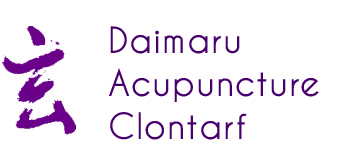

August 7th, 2023 | Posted in 2 Pain, Injuries, Sports
THE KNEE JOINT is subject to more trauma than any other joint. Knee pain can be the result of several factors, including injury, disease or the gradual wearing down of the joint.
Ilio-tibial band syndrome is most commonly diagnosed in the category of accident/trauma. This is usually a repetitive stress disorder due to the accumulation of micro-trauma. However, occasionally it may be seen as an acute trauma. The injury is at the level of the muscles and tendons, with qi and blood stagnation in the channels and collaterals.
The disease most commonly associated with knee and joint pain is arthritis. A type of rheumatic disease, arthritis causes stiffness and pain in the joints and may be accompanied by inflammation, redness and swelling. Problems can be due to osteo, rheumatoid and menopausal problems. Arthritis not only affects joints; it can also affect supporting structures such as muscles, tendons, and ligaments.
Other common causes of knee pain include tendinitis (inflammation of a tendon in the joint), a torn meniscus or ligament, and sprain, trauma, bursitis, chondritis.
In TCM diagnosis, factors such as:— inflammation, oedema, limited movement, bone, ligaments, muscle, patella, obesity will be considered. If flexion(bending) is limited acupuncture will be given to inside points of the knee. If extension is limited points near the muscles and attachments will be used. Even though ilio-tibial band syndrome is a repetitive stress injury, internal organ imbalances frequently seem to contribute. Internal organ imbalances refer to the functions of these organs in relation to TCM theory and associations. The acupuncture treatment plan will be based on this diagnosis.
Acupuncture is very powerful in relieving pain (See article: ‘Acupuncture; How it works).
Prognosis: Acupuncture treatment initially is twice a week for three weeks, then a re-evaluation is done. Most cases without complications have good results within six treatments. With chronic cases, treatment needs to be continued at least once weekly after the first three-week period.
Western Medicine Treatment
Most often osteoarthritis of the knee is treated with pain-reducing medicines, such as aspirin or acetaminophen; nonsteroidal anti-inflammatory drugs (NSAIDs), such as ibuprofen; and exercises to restore joint movement and strengthen the knee. Losing excess weight can also help people with osteoarthritis.
Rheumatoid arthritis of the knee may require physical therapy and more powerful medications. In people with arthritis of the knee, a seriously damaged joint may need to be replaced with an artificial one. (A new procedure designed to stimulate the growth of cartilage by using a patient’s own cartilage cells is being used experimentally to repair cartilage injuries at the end of the femur at the knee. It is not, however, a treatment for arthritis.)
